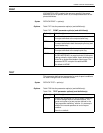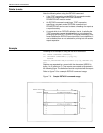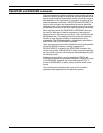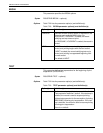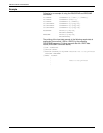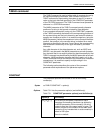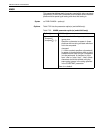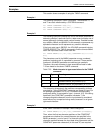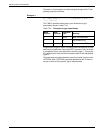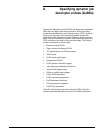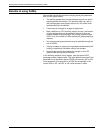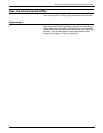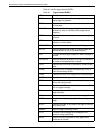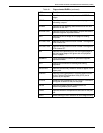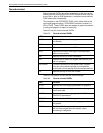
USING LOGICAL PROCESSING
XEROX DOCUPRINT 180 LPS PDL REFERENCE 7-47
Examples
This section shows examples of using the TABLE command.
Example 1
The following are sample TABLE commands. The identifiers T1, T2,
and T3 are each referenced by a CRITERIA command.
T1: TABLE CONSTANT=(’$$//’);
T2: TABLE CONSTANT=(’//JOB ’,’//EXEC’);
T3: TABLE CONSTANT=(120)’*’;
Example 2
The following example illustrates the use of the MASK parameter to
determine whether a particular field in a data record contains one of
several different 6-character serial number formats. Possible formats
are: xx999x, x999x9, and 99x999. For this example, x represents any
alphabetic character and 9 represents any numeric character.
If the input code type is EBCDIC, the VOLUME command includes
TCODE=EBCDIC. The TABLE command to find the format x999x9
within the input data stream would look like:
T1: TABLE MASK=(’?’,’%’,’@’),CONSTANT=(’@ % % % @
%’);
The characters used in the MASK parameter occupy numbered
positions, beginning with 0, separated by commas. These position
numbers in the MASK parameter are used as type numbers.
Therefore, the mask character to type associations listed in table
7-33 are made for the above TABLE command.
The data string characters in the positions corresponding to those
occupied by \ in the CONSTANT parameter are tested for type 2 (in
the example, alphabetic A-Z or a-z). Characters corresponding
positionally with a % are tested for type 1 (numeric, 0-9). If the string
specified in the CONSTANT parameter included a ?, the
corresponding data character from the input stream is considered
equal without any comparison being made, because it is an ignore
type mask character.
Example 3
If the TABLE command in example 2 were changed to:
T2: TABLE MASK=(’?’,’%’,’@’),CONSTANT=(’A7%%@%’);
Then, when the first two character positions of the CONSTANT
parameter are checked for a mask character (as specified in the
MASK parameter), none is found. For those two positions, exact
character matches between the input data string characters and the
CONSTANT parameter characters (in this case A7) are required.
Table 7-33. Mask character to type associations for the TABLE
command
Character Type Meaning
? None Make no comparison
% 1 Standard default, any numeric (0-9)
@ 2 Standard default, any alphabetic (A-Z, a-z)



